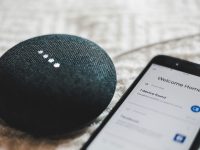Internet of Things (IoT) is already a big deal in our everyday lives, but it's also now making our homes smarter and helping social housing providers step up their game for the benefit of tenants.
Social housing landlords, like local authorities and housing associations, own a whopping 4.4 million properties in England alone. Nearly 1 in 5 households in England live in social housing.
Now, with the help of digital platforms and tools, including IoT sensors, they're using technology to ensure these homes are affordable, well-maintained and offer a healthy indoor living environment.
The Housing Ombudsman's Annual Complaints Review for 2022–2023 revealed a troubling four-fold increase in serious failures or delays by landlords in the social housing sector in England. This surge, leading to over 5,000 escalated complaints mainly stemmed from poor property conditions (37%), health and safety concerns (52%), and mishandling of complaints (39%).
To tackle these issues, landlords are turning to IoT sensors and smart, connected home tech. These devices make it easier to manage and monitor property conditions - they're also a game-changer for health risks like damp and mould, as the sensors can catch problems early and even predict maintenance needs.
Companies like Aico are already offering scalable and future-proof IoT solutions that don't just treat the symptoms but dig into the root cause of issues like damp and mould. These include sources of increased humidity and moisture, thermal properties of the building and heating patterns, and ventilation characteristics, which help build an understanding of internal conditions.
By using sensors that measure temperature, humidity and CO2, along with alarms for fire and carbon monoxide, landlords can stay ahead of the game and fix things before they spiral out of control. This proactive shift in the housing sector towards adopting sensor systems to help landlords identify, manage and resolve indoor environment issues has been endorsed by the UK government.
A connected home IoT system lets landlords manage their entire housing portfolio remotely, making it efficient and cutting down on reactive measures. It's a win-win – protecting residents, meeting regulations, and improving communication between landlords and tenants.
Using IoT to connect homes is just one part of the upcoming annual Housing Technology event, which kicks off on 05 March with informal afternoon workshops (new for 2024) and an evening welcome reception, before the main conference on 06-07 March 2024 at the East Midlands Conference Centre in Nottingham. The conference is the leading and longest-running IT conference in housing. They will be hosting a large range of fantastic presentations covering IoT, but also data management, digital transformation, agile infrastructure, cyber security, finance and procurement, tenants as consumers and more. Housing Technology brings people together to really get into the details of how organisations can transform their technological infrastructure to improve their tenants’ lives.
Any housing providers interested in attending should grab their tickets before 01 March 2024, which is the attendance closing date: https://conference.housing-technology.com/tickets.





